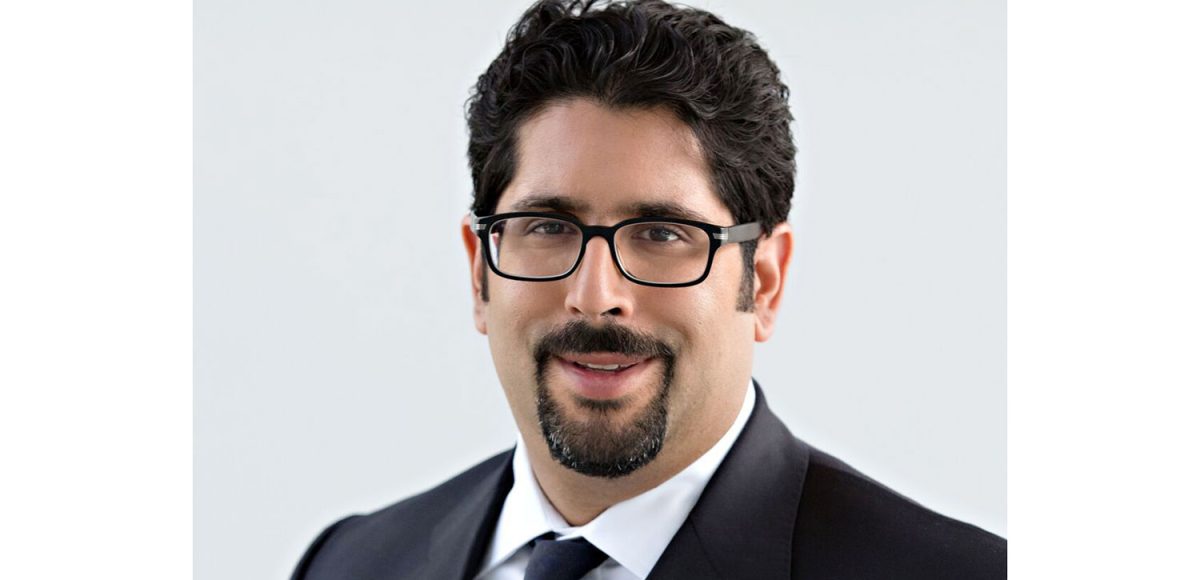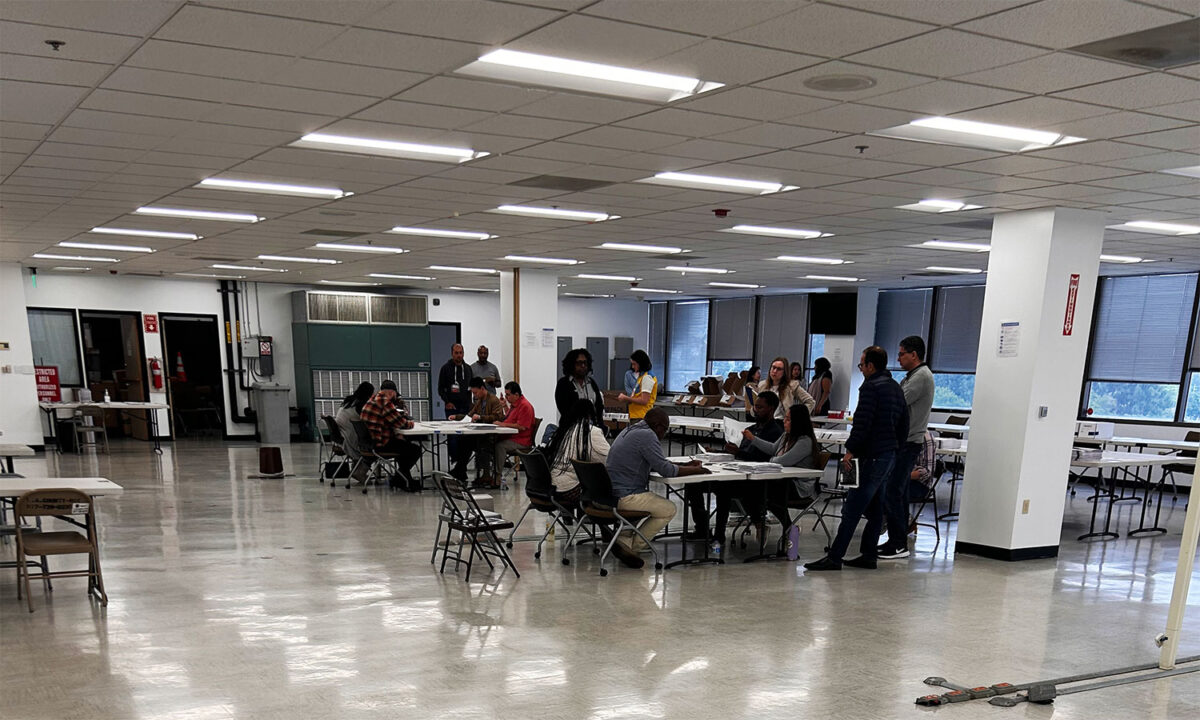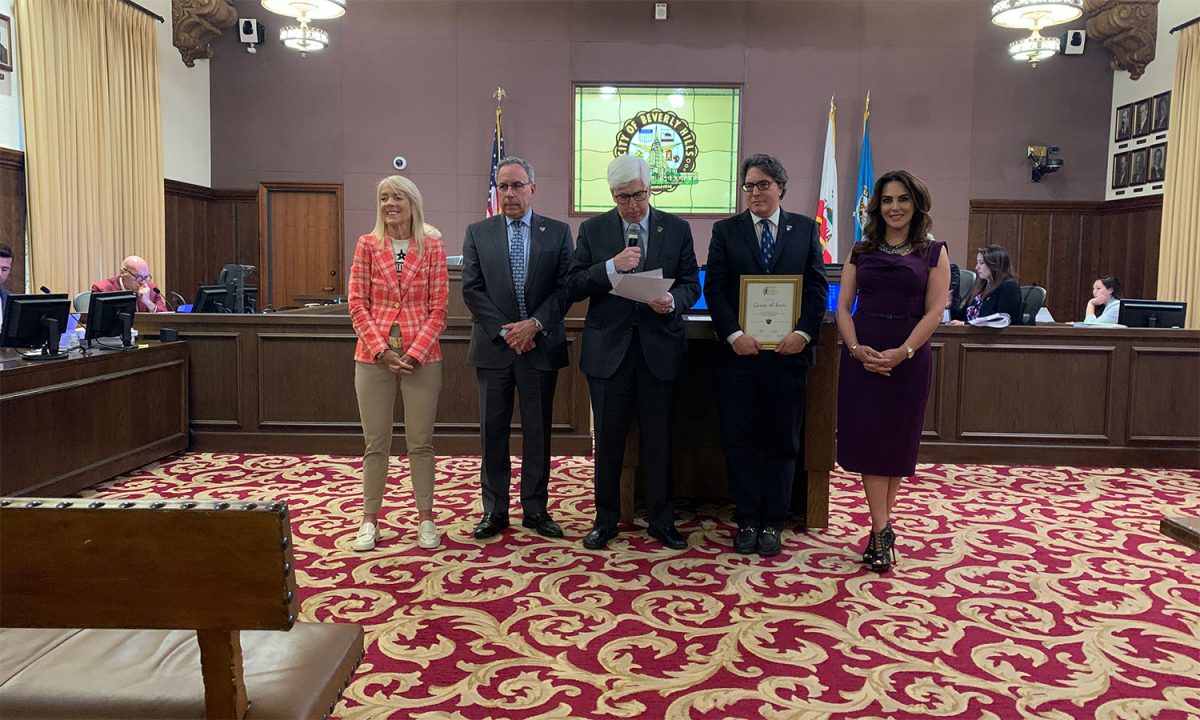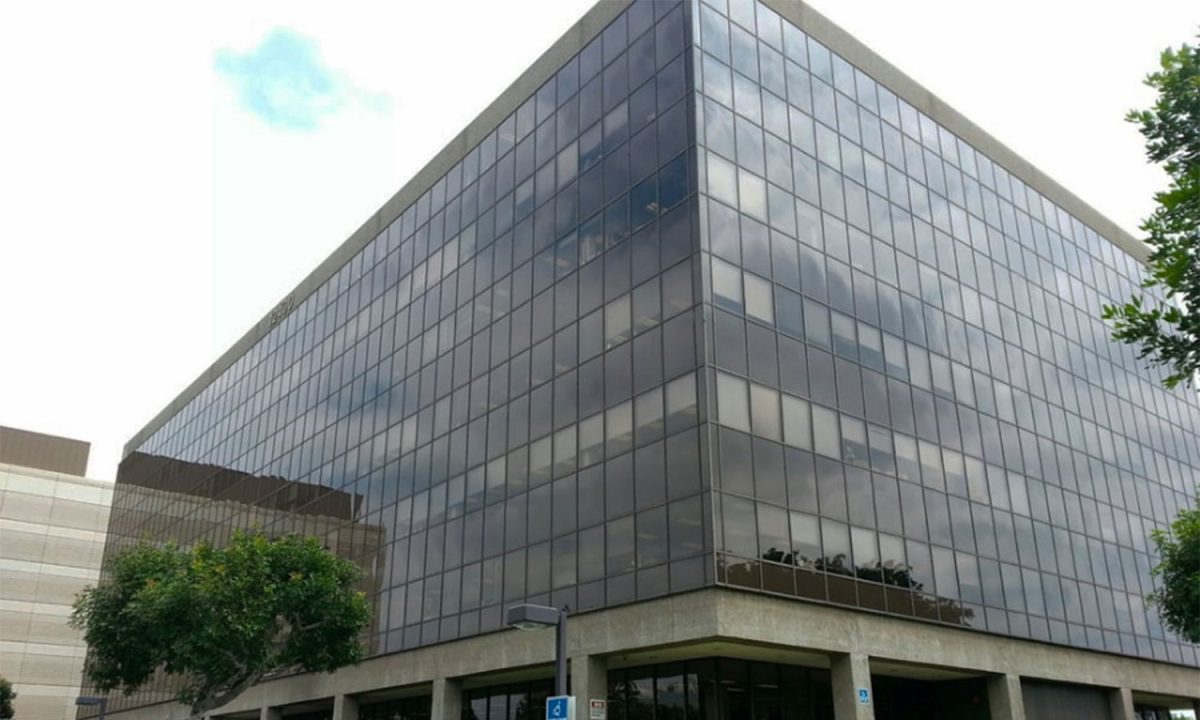As Chairman and CEO of LVMH for North America, Anish Melwani oversees the businesses of the world’s foremost luxury conglomerate, LVMH Moët Hennessy Louis Vuitton (“LVMH”). The Paris-based group’s more than 75 Maisons dominate luxury sectors ranging from fashion to wines and spirits to jewelry.
Real estate development is not in the portfolio, a point Melwani noted more than once during a recent sit-down interview with the Courier. The point is a salient one, in light of the upcoming referendum on the LVMH-backed Cheval Blanc Beverly Hills hotel project.
The May 23 referendum, Measures “B” and “C,” asks residents to weigh in on the city’s approval of the Cheval Blanc project. The process, which took nearly three years, resulted in unanimous approval by the Planning Commission and a 4-1 vote in its favor by the City Council.
A “yes” vote on the measures confirms the city’s actions and has garnered extensive support (including an endorsement from the Courier’s Advisory Board).
The “no” on “B” and “C” forces are mounting a vocal campaign in their own right. Their arguments include the refrain that a luxury commercial developer has come in to snag huge zoning and land use privileges from the city.
Not surprisingly, Melwani demurred from making any prediction on the referendum. He did, however, expound on the genesis, vision and philosophy behind the project.
“We have been part of the community for 30, 40 years, and we’ve continually increased our presence and our investment in Beverly Hills,” he told the Courier.
Melwani sees Cheval Blanc Beverly Hills as a logical next step for a company with decades-long ties to the city. Moreover, the idea of the hotel is a “deeply personal one” for LVMH Chairman and CEO Bernard Arnault, whom Melwani refers to as “the boss.”
“Obviously, all the corporate people like me are excited about it now, but this was his vision from the beginning. We’ve been talking about this project since 2017,” said Melwani.
During that time period, LVMH had already opened Cheval Blanc properties in Courchevel in the French Alps, the Maldives, St-Barth and St. Tropez. Cheval Blanc Paris would open in 2021, to immediate acclaim.
“Each of those properties is deeply personal to Mr. Arnault and his family. Courchevel is where he went skiing growing up. St-Barth is obviously a French island. And while our corporate headquarters are mostly in New York, I think if you ask him what’s his favorite place to visit in the United States, he would say here in Los Angeles, in Beverly Hills,” said Melwani.
Though the concept of placing a hotel in Beverly Hills may have been long-standing, the reality came into focus only when the real estate became available. Key parcels, such as the former Brooks Brothers building on the corner of South Santa Monica and Rodeo and the Paley Center for Media on Beverly Drive, were acquired and eventually combined to create an expanse suitable for the hotel.
Melwani noted that early on, the city made requests that were incorporated into the overall design.
“When we first met with city officials to talk about the project, one of the things they asked us was ‘How can we in our design reinvigorate North Beverly Drive?’ There is not a lot of energy on Beverly, and for the health of the economy and the Golden Triangle, it can’t only be Rodeo. So instead of having the entrance of the hotel on Rodeo Drive, we are wrapping it around to help pull the energy over on Beverly. The restaurant will be over there,” said Melwani.
He described the multi-year hearing process in the city as a “collaboration.”
“The scale of the project was reduced as a result of the hearings. We redesigned significant elements of the project. I think people need to understand they’re not actually voting ‘yes’ or ‘no’ on us. They’re voting ‘yes’ or ‘no’ on the process that their representatives put the project through, which was robust,” said Melwani.
He added, “We’ve always said from day one, we only want to build a hotel that the community is excited about. This was an extraordinarily professional process by the city, and we were super impressed.”
Not everyone felt the same way.
The most significant organized opposition came from UNITE HERE Local 11, the union representing hotel and other service industry workers. The union’s representatives voiced objections at Planning Commission and City Council hearings and hired experts to oppose the project on various grounds. Eventually, the union garnered enough signatures on petitions to place the City Council approvals on a referendum.
Of the challenge, Melwani will only say, “We’re not anti-union.”
Union labor will be used to construct the hotel. And prominent unions have endorsed the project.
“When you’re building a world-class building, you want the electricians and the plumbers to know what they’re doing. You’re not going to cut costs in that area, and you want the best people to do it,” said Melwani.
Updated design details for Cheval Blanc Beverly Hills are still scarce at this point.
“I’m not being coy. The project is still four years out,” noted Melwani.
He did share that Arnault’s personal involvement is extensive. Thus far, Arnault has worked closely with architect Peter Marino on the other Cheval Blanc properties. His input extends to choosing artworks for the hotels. In Paris, for example, a white horse sculpture by Frank Gehry is a focal point of the lobby.
“Frank and the boss have a special relationship because Frank built the Fondation Louis Vuitton museum in Paris. At the property we hope to build on Rodeo Drive, we will focus on American artists. Of course, there will be touches of French savoir-faire. The mural in the lobby is a Sol LeWitt that is planned. The large exterior sculpture is by Tony Cragg,” said Melwani.
Other design details include stone chosen by Marino to capture the setting sunlight. Windows of varying sizes will create the sense of a village.
“You can imagine what that does to the budget. But again, this project is not a short-term money-making thing. Frankly, if we wanted to make money with this real estate, we would just have opened retail. And we would make far more money by doing that,” Melwani observed.
Plans also call for a private club at the hotel, though that concept has evolved.
“When we conceived of the private club three years ago, what private clubs were doing is already different today. What we did in the design and in the permitting is to allow the space, and make sure that the operations of it would be unobtrusive to the hotel operations, to the community. Things have been floated, but it is just too early to say,” said Melwani.
He did note that he expects the membership of the club to be a combination of locals and frequent travelers to Beverly Hills.
“It will be a place where you can feel comfortable to go and hang out, possibly do some work or what have you. But also, a place where you can bring a couple of guests. And there was a big debate in the proceedings about how many guests people can bring in. This is not a place where you go to host a raging party,” he said.
At 109 rooms, Cheval Blanc Beverly Hills is a boutique property. It will not host weddings or bar mitzvahs. (“Beverly Hills already has many fine properties for that,” Melwani said.)
“The point is, it’s not like we’re adding this enormous thing. The rooms are going to be quite large because of the purpose of this as an ultra-luxury hotel. So yes, it’s only 109 rooms. I think the misconception that people have is that this is somehow going to be a bustling hub of activity. But if you think about the kind of travelers that we’re trying to attract with this kind of property, they don’t want to stay in a bustling hub of activity. That’s not the goal. If you go and visit our property in Paris, it is of similar size. I’ve never seen more than one car in the driveway.”
LVMH, he noted, is not a short-term actor or a developer that will flip the property. Nor will it build the hotel and then get someone else to manage it.
“I know it’s popular right now to villainize big corporations. And I also understand that the city has had experiences in the past with developers who may not live up to what their initial promises were. The only thing I can say is we’re not in the property development business. It’s just not what we do. There is literally zero chance that LVMH somehow five years from now will not be an active citizen of Beverly Hills. We are far too invested in this. And we’re not going anywhere. So, you can say that we’re a big company. Yes, that’s a fact. We are a big company, but we’re not outsiders to the market. As a group, as an institution, I think we have ample evidence of our roots here and our interests,” said Melwani.
Longevity and the concept of time also have a distinct meaning to LVMH.
“This is the thing. The boss’ focal distance, when we’re making investments, is 100 years. If you look at our recent acquisitions, we bought Tiffany & Co. It’s a brand that was started in 1837, and the boss believes it will be here for another 200 years.”
He cites as “conservative” the oft-repeated figure of three-quarters of a billion dollars generated by the project over the next 30 years. The numbers have been challenged by opponents.
“Those numbers are based on occupancy rates and the fact that hotel prices aren’t going down over time. The only time rates go down is when a hotel is not maintained. Well, I go back to my previous point. We are not developers. This is our hotel. It’s our name on the door. We’re going to keep this at the highest level. If there’s a pandemic in the next 30 years, there will be a couple of tough years. Fair enough. But I will tell you this, if you look at this last pandemic, 2020 was a rough year. By 2021, business was back. So even with a shock to the system, I still feel pretty confident in our numbers,” said Melwani.
As a closing thought, Melwani summed up the pitch he would make to an undecided referendum voter.
“Look, as an outsider, I’ve always thought of Beverly Hills as a beautiful place. And it’s not by accident. The city has prioritized beauty and art, culture and an aesthetic that represents the city, that takes advantage of the natural beauty of Southern California. And to me, the origin story of this project is to contribute to that legacy. And so, I think if you believe in that, if that’s why you live in Beverly Hills, that’s why you love to be here. This is something that we humbly submit is of the caliber to fit in with and dare even enhance that legacy going forward. If you believe that Beverly Hills is the pinnacle of a harmonious, beautiful, and prestigious community, then this fits in with that.”







